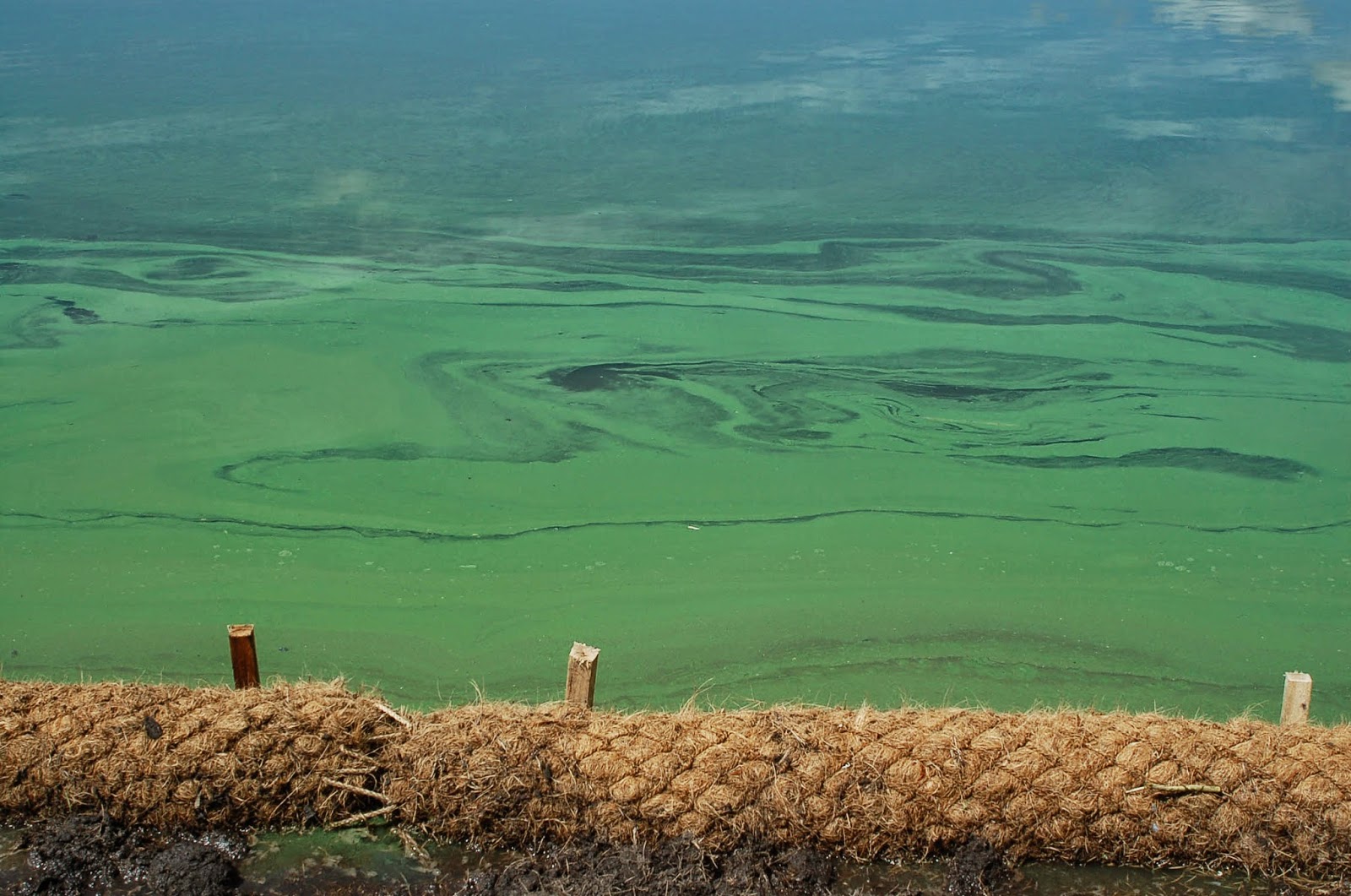 |
| Longer, hot summers combined with large rainfalls washing phosphorus into lakes sometimes create a recipe that results in blue green algae blooms. These can be toxic to humans and pets. |
In July, Carver Lake in Woodbury made the news with the announcement that blue green algae had been detected in the lake. On July 16 RWMWD staff took a sample at Carver Beach. The results of the sample were returned on July 24: Carver was experiencing a harmful algae bloom. Carver Lake Beach goers and other lake users were advised to avoid contact with the lake due to the presence of blue-green algae.
Blue green algae is often described as looking like pea soup or spilled green paint, but it can take other forms as well. The type of blue-green algae dominant in the sample from Carver Lake -Microcystis is known to produce toxins that can be harmful to pets and humans. Not all blue-green algae blooms produce toxins; however, there is no way to predict if or when a bloom will produce toxins. For this reason it is best to avoid contact and stay out of the water.
On July 28, the City of Woodbury took two samples at the beach for the actual toxin. Results showed trace levels that pose a low risk to humans and animals. On July 31 RWMWD water quality staff went back out to Carver Lake looking for blue green algae. They couldn’t find the typical paint like algae blooms anywhere on the lake but took an algae sample close to the beach to double check. It came back negative for the toxin producing blue green algae.
To learn more about blue green algae you can find fact sheets and photos on the Minnesota Pollution Control Agency and Minnesota Department of Health websites.
http://www.pca.state.mn.us/index.php/water/water-types-and-programs/surface-water/lakes/blue-green-algae-and-harmful-algal-blooms.html
Blue green algae blooms and mycrocystin
http://www.health.state.mn.us/divs/eh/hazardous/topics/bluegreenalgae.html
So why are there more blue green algae sightings these days? Extreme rain events - like this year's unusually wet June - washed more phosphorous into lakes. Longer, hotter summers cause algae that feeds on the phosphorous resulting in algae blooms. High temperatures coupled with rainfall washing excess nutrients into the water can combine to create harmful blue-green algae in lakes. This type of algae can harm pets, livestock, and even people.
To learn how recent weather problems are making the problem worse, you can listen to an online talk on MPR News by MPCA research scientist, Steven Heiskary who talks about how climate changes impacts the growth of blue green algae and water safety at this link: http://www.mprnews.org/story/2014/08/07/daily-circuit-climate-cast
 |
| The Minnesota Pollution Control Agency advises if you are not certain about algae, don't take a chance. Stay out of the water and keep your pets out too. |
As Heskiary advises, “You don’t have to be an expert to recognize an algae bloom that might be harmful. If it looks bad and smells bad, don’t take a chance. We tell people, if in doubt, stay out — if you are not sure, it’s best for people and pets to stay out of the water.”


No comments:
Post a Comment